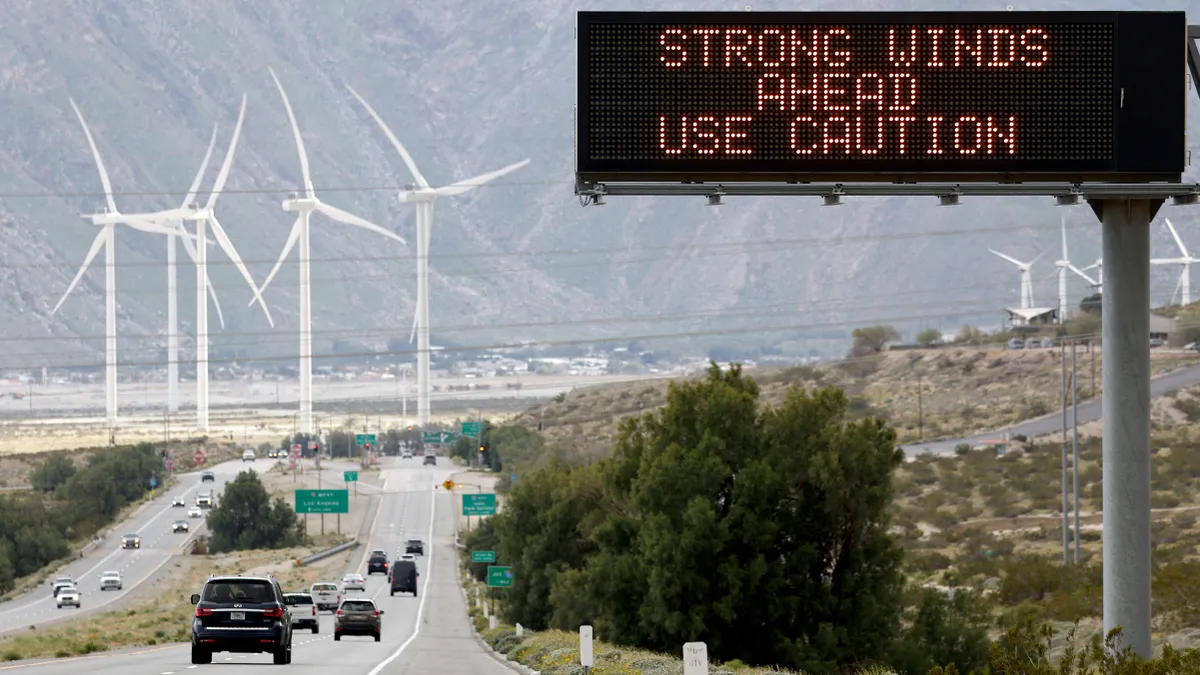The following Viewpoint is from Mike O'Boyle, electricity policy manager at Energy Innovation.
America's regulators have a utility information problem, and people who want a cleaner electricity system know it well.
Because they identify and profit from new infrastructure needs, utilities have embedded incentives to identify solutions that involve utility-owned infrastructure. Unfortunately, regulators have insufficient information to compare utility proposals against alternatives, and so the litigious nature of utility ratemaking continues lagging behind technological potential for a cleaner, cheaper, more reliable grid.
Regulators can pursue either outcome-oriented or information-intensive approaches to solve the utility information problem and get the most out of clean, distributed energy resources (DERs). Regulators should experiment with both, because in an era of ever-increasing options for power system optimization and rising information asymmetry, they will have to find ways to improve outcomes through a combination of utility incentives and improved data access.
Today, experimentation is happening and solutions are emerging, albeit relatively slowly: Integrated distribution planning (IDP) is an information-intensive solution being tested in at least 11 states.
Meanwhile, performance-based regulation (PBR) is being explored or implemented in at least 13 states (in many cases concurrently with IDP) as a way to motivate utilities toward system optimization.
Six states are testing both approaches simultaneously, and combining the two makes great sense if the aim is moving a slow-changing system a bit more quickly.
And in Washington D.C., a new potential model has emerged — vesting data sharing and distribution system optimization authority into a public third-party entity.
What we're getting from Integrated Distribution Planning
Studies consistently confirm the massive potential for cost-effective demand-side participation, including rooftop solar photovoltaics, energy storage, demand response (DR), energy efficiency (EE) and managed electric vehicle charging.
Rocky Mountain Institute's recent report The Economics of Clean Energy Portfolios shows system-wide potential for portfolios of DERs and clean energy resources to replace natural gas power plants, improving affordability, reliability and environmental performance. A recent LBNL analysis showing efficiency is the cheapest resource available, rigorous studies of the value of solar, National Renewable Energy Laboratory's 2025 California Demand Response Potential Study and numerous state-level cost-benefit analyses of utility EE and DR programs, further support the potential for demand-side participation to reduce system costs.
A few states have already had success operationalizing DERs as system resources, even before a full IDP process. For example, non-wires alternatives (NWA) demonstration projects in New York and California, including a recent decision to permit Pacific Gas & Electric to procure storage and DERs to replace uneconomic gas resources, are already underway.
Even with overwhelming evidence showing these resources provide benefits, in specific instances regulators, stakeholders and even utilities can't tell whether and to what extent they should be part of utility system planning. Environmental and consumer advocates cry out for cheaper, cleaner options to be included, but lack the information necessary to rebut specific utility proposals — this happens in integrated resource plans, grid modernization plans and utility rate cases.
IDP is uncovering information essential to incorporating demand-side resources into utility planning, revealing system needs such as local generation and substation upgrades that can be met with a combination of conventional resources and DER in California and New York. Calls to undertake hosting capacity analysis have resulted in improved distributed generation connection times in California and Hawaii, but the full potential for demand-side resources and more comprehensive NWAs to become part of grid planning still eludes even DER vanguard-states.
Efforts to organize and release publicly available data are essential to an affordable, reliable, clean electric grid because they illuminate the potential and value of dynamic load, storage, and other resources to balance the variability of solar and wind.
Two fundamental questions emerge from this information: Who should process, manage, and share all this data, and who should administer competitive solicitations for NWAs? The tension was apparent in a recent Utility Dive article covering the Interstate Renewable Energy Council's Guide for State Regulators on Hosting Capacity Analyses. Utility and Electric Power Research Institute representatives argue that mandates to share system capacity for DERs in real-time are premature, while DER advocates say policymakers must take bold steps and move quickly.
Given the underlying incentives that virtually punish utilities for collaborating with DER providers, the old question of utility incentives and information needs comes up again in the context of IDP itself. Given the incentives at play, can utilities really do IDP well?
An outcome-oriented approach for integrated distribution planning
Under the emerging approaches to IDP, utilities are required to several things they never did before:
- Quantify and reveal DER hosting capacity
- Quantify and reveal system needs before investing in solutions
- Anticipate DER deployment and incorporate DERs into other planning exercises
- Communicate data more or less in real-time
- Empower customers to share energy demand data with DER providers
- Solicit proposals from DER providers to aggregate customers and provide grid services
Utilities are infrastructure companies with less experience in information and data management, meaning they may need new internal capabilities to meet these demands — but cost of service regulation (COSR) provides no upside for this kind of innovation. In fact, the more successful a utility is at integrated distribution system planning, the more likely they are to defer or displace the need for utility-owned infrastructure. Under COSR, the winning proposition for ratepayers is often a losing proposition for utility investors.
Without changing the utility's business model and its financial incentives at the front end, the chances of a successful IDP at the back end are pretty slim.
PBR aligns utility incentives to ensure they become more profitable by rolling out IDP to maximize system and customer benefits. In particular, putting capital expenditures on equal footing with operational expenditures is an important nut to crack. Advanced Energy Economy Institute's Utility Earnings in a Service-Oriented World highlights the opportunities and challenges of equalizing solutions that require utility capital expenditures versus operational expenditures.
For example, New York's DER alternative demonstration projects allow utilities to place DER contract expenses into regulatory asset accounts, meaning they can earn a regulated rate of return on certain operational expenses. This is accompanied by a shared savings mechanism, allowing the utility to make additional profits that scale with the size of the savings relative to the conventional solution. This approach is also being tried in Rhode Island and explored in Hawaii, California and Minnesota.
States are also exploring performance incentive mechanisms (PIMs) that reward the utility for improving system efficiency and reducing cost. New York, Massachusetts and Rhode Island utilities earn extra returns when they reduce system peak demand; this targeted incentive approach is being explored further in Minnesota, Oregon and Hawaii.
Getting these incentives right could motivate utilities to get the most out of DERs, even when it means investing less capital in their systems.
A new information-intensive approach: outsourcing IDP
One approach to solving the potential conflict of interest a utility might have conducting IDP is handing responsibility to a third party. The Distributed Energy Resources Authority Act (DERA Act) being debated in Washington, D.C. would vest IDP authority with a non-utility nonprofit entity called a DER Authority. This information-intensive approach to system optimization requires utilities to share unprecedented real-time data about system needs and customer usage, and relies on a new entity to synthesize this data to procure DERs.
Under the DERA Act, the DER Authority takes over many of the functions the utility would typically do under IDP, including load forecasts, analyzing NWA proposals, creating a platform to connect DER providers and customers and developing policy recommendations to improve DER integration.
Even with this new authority, the utility's role in optimizing DERs would still be significant. The utility is required to supply real-time public information about hosting capacity for DERs on every circuit, as well as larger-scale infrastructure needs, giving the utility significant control over what becomes a NWA candidate.
The utility will also have to provide the DER Authority with real-time data about customer usage at the meter level and ensure smart meters can communicate easily with in-home devices. Today's utilities are likely unprepared for these new functions, and they may need new revenue and potentially performance incentives or investment opportunities as carrots to accomplish these tasks.
It's worth noting this model of outsourcing utility-antagonizing functions isn't new: EE utilities such as Efficiency Vermont, Energy Trust of Oregon and Hawaii Energy are effectively nonprofit entities administering public efficiency budgets to maximize energy savings. And even these entities' mandates are no longer limited to efficiency: Efficiency Vermont and Hawaii Energy have targets for peak demand reduction, while the Energy Trust of Oregon helps customers adopt small-scale renewable energy projects. Perhaps the D.C. proposal is not as radical as it seems.
Finding the right balance
From a public policy perspective, D.C.'s proposal has merit. First and foremost, it endeavors to create an entity with a clear directive, resources and incentives to comprehensively maximize DER deployment for the public good. Second, it solves aspects of the utility information problem by requiring utilities to provide massive amounts of information necessary to identify the highest-value DER opportunities. Third, it provides a pathway to develop the market for elusive DERs, particularly demand flexibility, which can complement variable low-cost generation without increasing environmental impacts.
But the proposal may struggle to live up to its intention. As an extremely detailed legislative proposal, the bill is proscriptive but also may leave unforeseeable loopholes regulators may find challenging to counteract. For example, the vague requirement that utilities define system needs and share them with the DER Authority for a request for proposals for DER alternatives leaves specific capabilities that must be defined and replaced unspecified, though the bill does create a stakeholder process to resolve many details.
Also, requiring these needs to meet a $25 million threshold to be subject to NWA analysis means utilities can break infrastructure proposals into components that fall under this threshold. And, it does not solve the underlying information incentive problem. Without changing the underlying utility business model, which here would be excluded from profiting off of DER optimization, there are few reasons to play ball.
The DER Authority is a new experiment in the information-intensive approach to promoting system optimization, but reform combinations that increase regulatory focus on rewarding utility outcomes are equally important. Other states should watch carefully, particularly those who are frustrated with the utility's willingness to proactively engage customers and embrace cost-effective DERs.






















